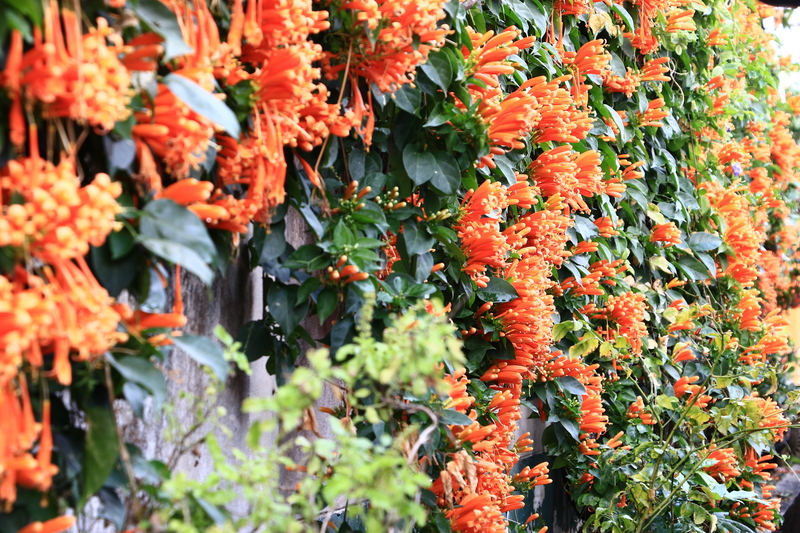Empowering Communities Through Gardening to Battle Climate Change
Posted on 23/08/2025
Empowering Communities Through Gardening to Battle Climate Change
Climate change is among the most pressing challenges facing our world today. Communities across the globe are seeking sustainable, actionable ways to help mitigate its effects. Community gardening has emerged as a powerful grassroots approach to not only improve local environments but also empower neighborhoods to become agents of real change. From reducing greenhouse gases to fostering environmental stewardship, gardening can be a transformative tool in our fight against climate change.
Understanding the Connection: Gardening and Climate Change
To fully appreciate the impact of gardening communities on climate resilience, it's essential to understand how climate change affects us and how green spaces can provide solutions.
What is Climate Change?
Climate change refers to long-term shifts in global temperatures and weather patterns, primarily driven by human activities such as burning fossil fuels, deforestation, and intensive agriculture. These shifts result in:
- More frequent and severe weather disasters (droughts, storms, floods)
- Disrupted agricultural systems
- Loss of biodiversity
- Rising sea levels
Traditional mitigation strategies often focus on large-scale interventions, but individuals and local communities can also make meaningful contributions.
How Can Gardening Fight Climate Change?
Gardening, whether in small backyards, urban rooftops, or shared community plots, plays a vital role in creating climate solutions:
- Plants absorb carbon dioxide (CO2), a leading greenhouse gas, through photosynthesis.
- Gardens enhance soil health, increasing the earth's capacity to store carbon.
- Green spaces help cool urban environments, reducing the need for energy-consuming air conditioning.
- Growing local food reduces "food miles" and thus lowers transportation emissions.
- Gardening encourages biodiversity, fostering resilient ecosystems.
These benefits illustrate that empowering communities through gardening is not only possible but is desperately needed.

Community Gardening: A Force for Environmental and Social Good
Empowering communities to establish and maintain gardens produces lasting impacts beyond environmental stewardship. Community gardens:
- Improve access to fresh, healthy foods
- Strengthen social ties and promote inclusivity
- Offer educational opportunities for all ages
- Improve local food security and resilience
- Beautify neighborhoods and increase property values
Let's explore the multifaceted role that collective gardening plays in battling climate change and creating more sustainable communities.
1. Carbon Sequestration in Community Gardens
Soil is one of our greatest allies in combating climate change. Healthy, living soils in community gardens can capture and store significant amounts of carbon from the atmosphere. Through:
- Composting organic matter to enrich soils
- Planting perennials and deep-rooted plants that stabilize carbon
- Practicing no-till or low-till methods to prevent carbon loss
Community gardening projects thus help draw down atmospheric CO2--a crucial step towards a more stable climate.
2. Increasing Urban Green Spaces for Cooler Cities
Urban areas are particularly susceptible to the urban heat island effect--when concrete and asphalt retain heat, raising city temperatures. By establishing community gardens and green corridors, neighborhoods can:
- Lower urban temperatures by providing shade and evapotranspiration
- Reduce energy use for cooling, lessening overall carbon footprints
- Protect vulnerable populations from heat-related health risks
3. Reducing Food Miles and Localizing Food Systems
A significant portion of food-related emissions comes from transport, packaging, and storage. Growing food locally in community gardens directly reduces the need for:
- Long-distance transportation (trucks, ships, airplanes)
- Packaging materials (plastics, styrofoam, etc.)
- Large-scale refrigeration and processing
Empowering communities to grow their own food means fresher produce, lower emissions, and greater food sovereignty.
4. Fostering Biodiversity and Resilient Ecosystems
Community gardens often plant a diversity of crops and flowers, creating havens for pollinators, birds, and beneficial insects. This increased biodiversity:
- Makes gardens more resistant to pests and diseases
- Supports natural pest control, reducing chemical pesticide use
- Builds local ecosystem resilience in the face of climate change
5. Education and Civic Engagement
Community gardening naturally fosters environmental education. These spaces act as living classrooms, where residents--especially children--learn about:
- Sustainable agriculture techniques
- Biodiversity conservation
- Composting and waste reduction
- Climate action and stewardship
Empowered by knowledge, community members are more likely to become climate activists and advocates for green policies.
Examples of Community Gardening Empowerment
Urban Gardens: Turning Concrete Jungle into Lush Oases
Cities around the world are adopting innovative ways to empower residents through gardening. Notable examples include:
- New York City's GreenThumb: Over 550 community gardens across the city help absorb carbon and provide fresh produce to thousands of urban dwellers.
- Detroit Urban Gardening Movement: Vacant lots have been transformed into productive gardens, improving food security and neighborhood cohesion.
- London's Edible Bus Stops: Public transit stops reimagined as community garden plots that beautify and detoxify urban spaces.
Permaculture and Regenerative Agriculture in Community Initiatives
Many communities are adopting permaculture and regenerative gardening principles to maximize climate benefits:
- Building perennial food forests that mimic natural ecosystems and capture more carbon
- Practicing companion planting for enhanced soil health and biodiversity
- Organizing workshops to share sustainable gardening skills
Empowering Vulnerable Communities
Community gardening initiatives can especially empower groups disproportionately affected by climate change, including:
- Low-income neighborhoods with limited grocery access
- Indigenous communities stewarding traditional ecological knowledge
- Schools and youth organizations teaching the next generation of climate leaders
In many cases, gardens become safe spaces for healing, cultural exchange, and strengthening local identities.
How You Can Empower Your Community Through Gardening
Want to take action? Whether you're part of a local organization or a concerned resident, you can spark change by starting or supporting community gardening projects.
Steps to Start a Community Garden for Climate Action
- Organize a core group: Gather neighbors, friends, or local organizations interested in green initiatives.
- Find a suitable location: Look for empty lots, schoolyards, rooftops, or even roadside verges.
- Seek permission and support: Contact landowners, city officials, or housing associations to get the green light.
- Plan your garden: Design for biodiversity, carbon sequestration, and accessibility. Consider raised beds, pollinator habitats, and composting areas.
- Fundraise and gather resources: Seek grants, donations, or in-kind help from local businesses.
- Engage and educate: Host planting days, workshops, and community events to involve residents of all ages.
- Monitor and share progress: Track your garden's contributions to carbon reduction and report successes to foster broader support.
Sustainable Gardening Tips for Maximum Climate Impact
- Compost organic waste to enrich soil and reduce landfill methane.
- Plant trees and perennials, which absorb more carbon over time.
- Collect rainwater and practice waterwise gardening.
- Avoid chemical fertilizers and pesticides that harm soil microorganisms essential for carbon storage.
- Grow native and climate-resilient plants for less maintenance and maximum environmental benefit.
Promoting Gardening for Climate Action: Ideas for Advocacy and Outreach
- Partner with local schools to integrate gardening into science education and climate change awareness programs.
- Host open garden days to invite community members and policymakers to learn about sustainable practices.
- Share stories of impact through social media, newsletters, and local media outlets to inspire others.
- Collaborate with environmental organizations to amplify your efforts and access resources.
- Advocate for green policies that support urban gardening, green infrastructure, and local food systems.
The more communities see and experience the benefits of gardening for the environment, the more likely they are to support climate-friendly initiatives in the future.
Overcoming Challenges in Community Gardening for Climate Change
While the advantages are clear, there are challenges to empowering communities through gardening for climate action:
- Lack of available land or threats of gentrification
- Limited funding and resources
- Water scarcity in some regions
- Knowledge gaps in sustainable gardening practices
Overcoming these challenges requires collaboration, persistent advocacy, and creative solutions. For example:
- Forming partnerships with local governments or land trusts to secure land access
- Establishing volunteer programs and seeking grant support
- Implementing water-saving techniques (mulching, drought-tolerant plants)
- Providing free workshops and mentorship programs for new gardeners

The Future: Scaling Up Community Gardening for Climate Resilience
How do we take community gardening to the next level in our fight against climate change? Scaling up requires coordinated action, systemic support, and continued innovation. Here are key strategies:
- Integrate gardens into urban planning: Mandate green spaces in new developments and retrofit existing neighborhoods.
- Create supportive policies: Offer incentives for green infrastructure and sustainable local agriculture.
- Foster knowledge exchange: Build networks to share climate-smart gardening practices between cities, regions, and countries.
- Pursue research: Study the measurable impacts of community gardens on carbon reduction and ecosystem services.
- Center equity: Ensure that marginalized communities are empowered as leaders and beneficiaries of community gardening initiatives.
Conclusion: Growing Hope Through Collective Action
Empowering communities through gardening truly is a beacon of hope in the climate crisis. It weaves together environmental stewardship, social justice, health, and resilience. When neighbors come together to plant seeds, they are not only cultivating food and flowers but also growing hope, knowledge, and the collective power needed to tackle climate change.
By supporting and scaling up community gardening efforts, we can all contribute to a more sustainable, healthy, and equitable future--one rooted in the simple yet transformative act of growing together. The time to plant the seeds of change is now.

